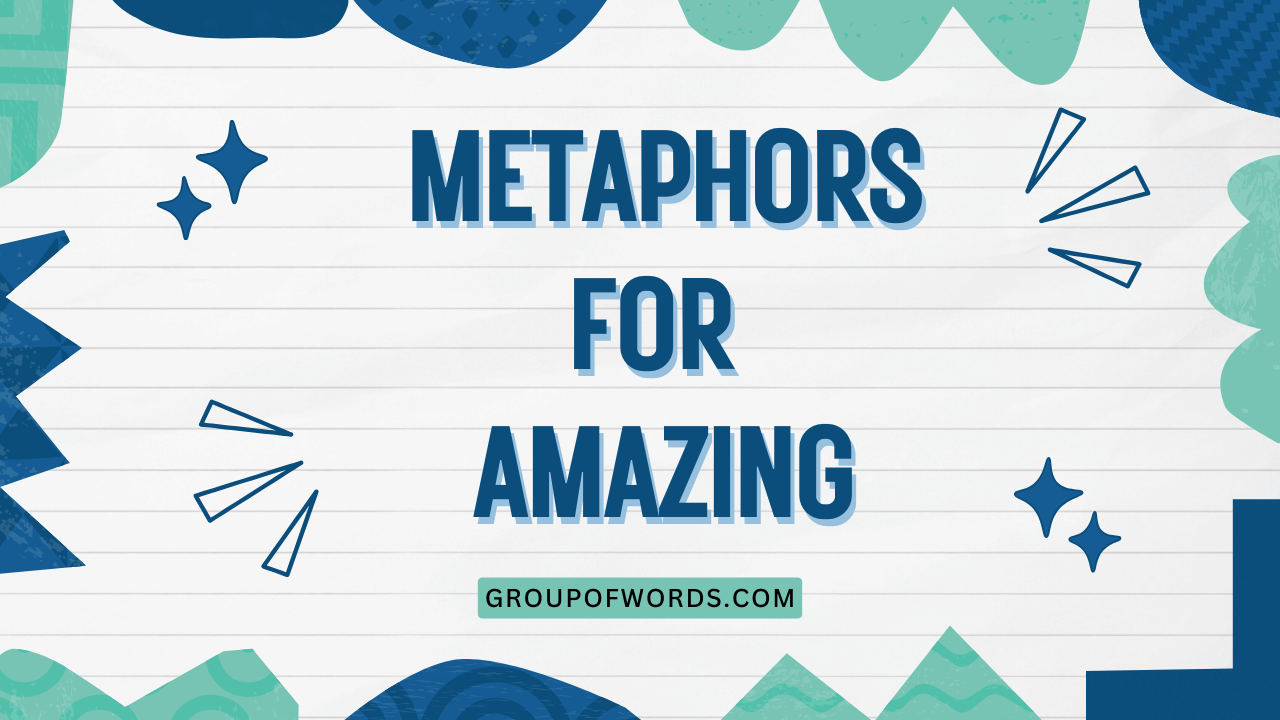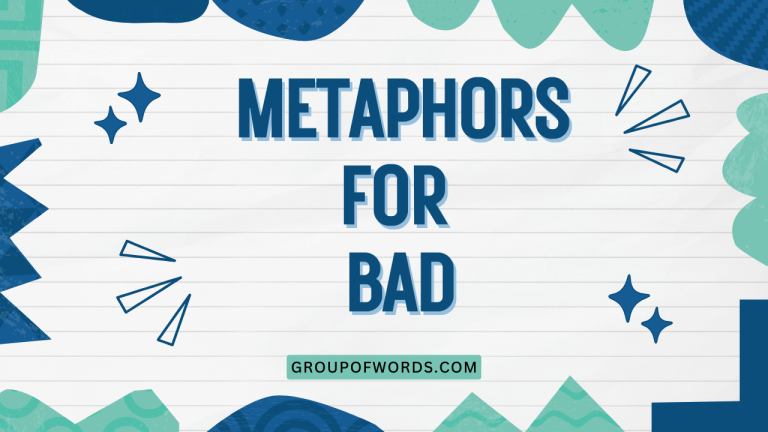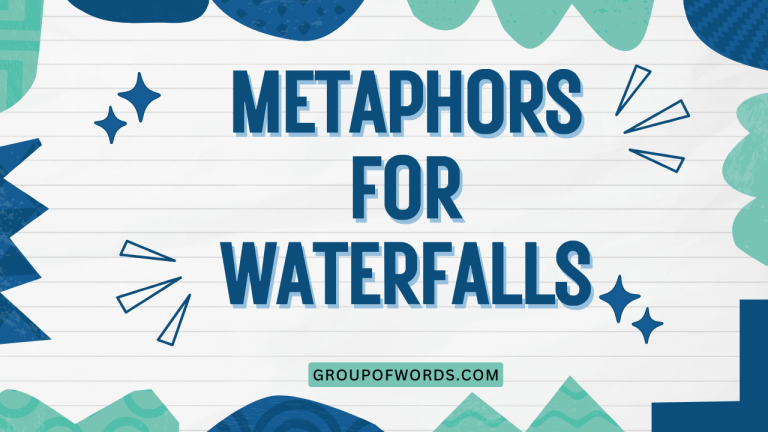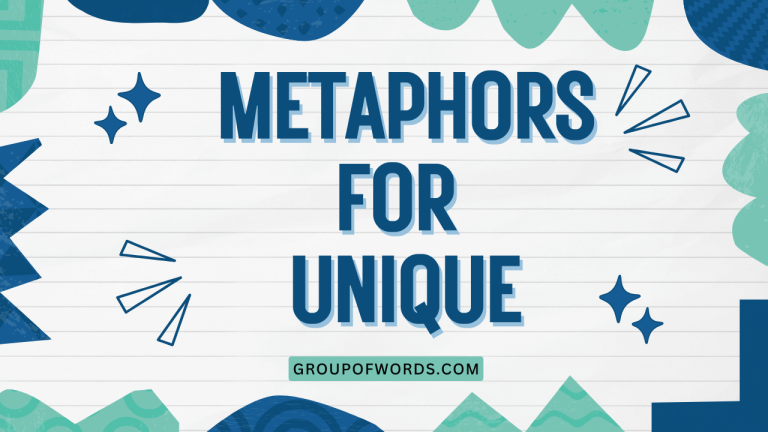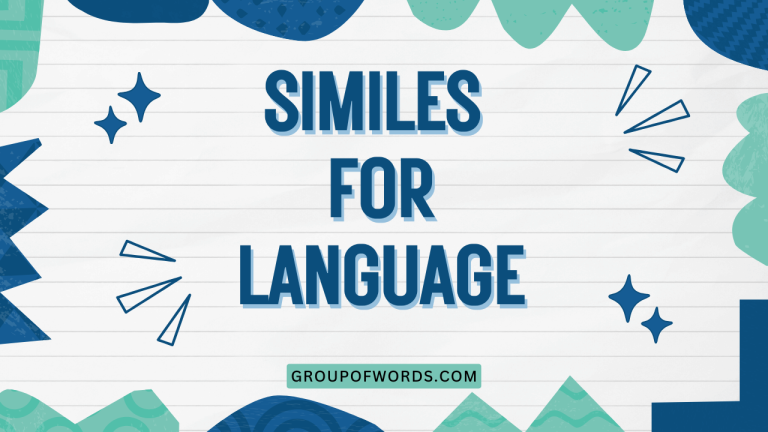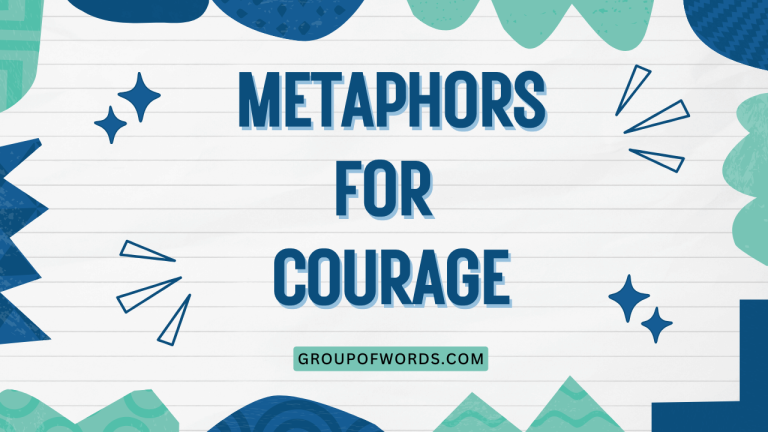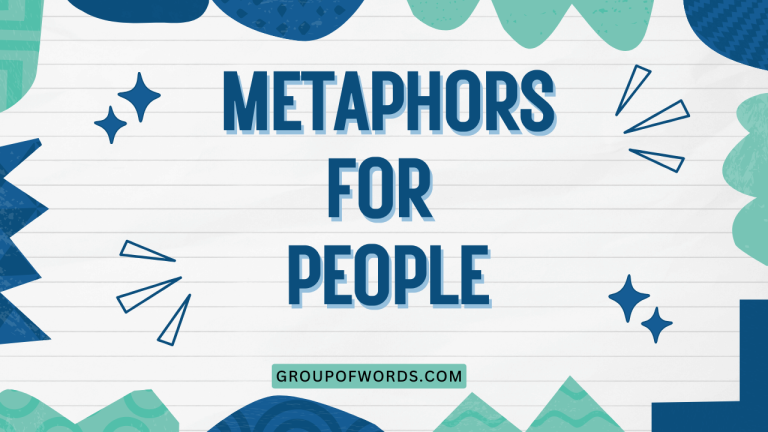Metaphors for Amazing: Expanding Your English Vocabulary
The English language is rich with possibilities, and one of the most engaging ways to express yourself is through the use of metaphors. When you want to convey that something is truly amazing, simply saying “amazing” can sometimes feel insufficient.
This article explores a wide array of metaphors that can elevate your language, adding depth and color to your descriptions of extraordinary experiences, objects, and people. Whether you’re a student, a writer, or simply someone looking to enrich your vocabulary, this guide will provide you with the tools to express amazement in creative and impactful ways.
By understanding and utilizing these metaphors, you’ll not only enhance your command of the English language but also gain a deeper appreciation for the art of figurative language. This article is designed for learners of all levels, from intermediate to advanced, who are looking to refine their expressive abilities and communicate more effectively.
Table of Contents
- Introduction
- Definition of Metaphor
- Structural Breakdown of Metaphors
- Types of Metaphors for “Amazing”
- Examples of Metaphors for “Amazing”
- Usage Rules for Metaphors
- Common Mistakes When Using Metaphors
- Practice Exercises
- Advanced Topics in Metaphor Usage
- Frequently Asked Questions
- Conclusion
Definition of Metaphor
A metaphor is a figure of speech that directly compares two unrelated things. Unlike a simile, which uses words such as “like” or “as” to make a comparison, a metaphor states that one thing *is* another, implying a shared quality or characteristic. The power of a metaphor lies in its ability to create vivid imagery and deeper understanding by transferring qualities from one concept to another.
Metaphors are used extensively in literature, poetry, and everyday conversation to make language more engaging and expressive. They allow us to perceive familiar things in new ways by highlighting unexpected similarities.
Understanding metaphors is crucial for interpreting literature and enhancing our own communication skills.
The function of a metaphor extends beyond mere decoration. It serves as a cognitive tool, helping us to understand abstract or complex concepts by relating them to something more concrete and familiar.
For example, describing an amazing performance as “electrifying” uses the tangible experience of electricity to convey the energy and excitement of the performance.
Structural Breakdown of Metaphors
A metaphor typically consists of two main elements: the tenor and the vehicle. The tenor is the subject being described, while the vehicle is the object or concept to which the tenor is being compared. The connection between the tenor and the vehicle is the shared quality or characteristic that the metaphor aims to highlight.
Consider the metaphor “Her voice was a silver bell.” Here, “her voice” is the tenor, and “a silver bell” is the vehicle. The shared quality is the clear, melodious, and pleasing sound.
The comparison isn’t literal; her voice doesn’t physically transform into a bell, but the metaphor effectively conveys the quality of her voice.
Effective metaphors create a sense of resonance and understanding. They should be evocative and original, avoiding clichés that have lost their impact through overuse.
The best metaphors offer fresh perspectives and enhance the reader’s or listener’s understanding of the subject.
Types of Metaphors for “Amazing”
When seeking metaphors to express “amazing,” we can draw from various categories to create a rich and diverse range of expressions. Here are some key types:
Sensory Metaphors
Sensory metaphors appeal to the five senses: sight, sound, smell, taste, and touch. They describe the amazing quality of something by associating it with a sensory experience.
Natural Phenomena Metaphors
These metaphors use elements of nature, such as mountains, oceans, stars, and weather, to convey the magnitude and wonder of something amazing.
Superlative Metaphors
Superlative metaphors employ hyperbole and exaggeration to emphasize the exceptional quality of something, often comparing it to the ultimate example of its kind.
Transformative Metaphors
These metaphors suggest that something amazing has the power to change or elevate the subject, creating a sense of awe and wonder.
Celestial Metaphors
Celestial metaphors draw on the imagery of stars, planets, and other celestial bodies to convey a sense of grandeur, brilliance, and otherworldly beauty.
Examples of Metaphors for “Amazing”
To illustrate the different types of metaphors for “amazing,” here are several examples categorized by type. These examples demonstrate the versatility and expressive power of metaphorical language.
Sensory Metaphor Examples
Sensory metaphors are particularly effective because they engage the reader’s imagination and create a vivid, immersive experience. By appealing to the senses, these metaphors can convey the feeling of amazement in a tangible and relatable way.
| Metaphor | Explanation |
|---|---|
| The concert was a symphony of light and sound. | The concert wasn’t literally a symphony, but the metaphor conveys a harmonious and overwhelming sensory experience. |
| Her performance was pure velvet. | The texture of velvet suggests smoothness, richness, and elegance, indicating the exceptional quality of the performance. |
| The sunset was a painting of fire across the sky. | The sunset is compared to a fiery painting, emphasizing its vibrant colors and breathtaking beauty. |
| His voice was liquid gold. | This suggests the voice is rich, valuable, and pleasing to the ear. |
| The aroma was a fragrant dream. | The smell is so delightful it’s almost dreamlike. |
| The view from the mountaintop was an endless canvas of blue. | The vastness and beauty of the view are likened to a painting. |
| The dancer moved like a whisper on the wind. | The dancer’s movements are delicate and graceful. |
| The chocolate cake was a decadent indulgence, a taste of heaven. | The cake is incredibly rich and satisfying. |
| The laughter in the room was a sparkling fountain of joy. | The laughter is abundant, cheerful, and uplifting. |
| The fireworks display was a dazzling spectacle of light and color. | The fireworks are visually stunning and impressive. |
| Her smile was a ray of sunshine on a cloudy day. | Her smile is bright, warm, and uplifting. |
| The music was a vibrant tapestry of sound. | The music is complex, rich, and engaging. |
| The feeling was an electric current running through my veins. | The feeling is intense and energizing. |
| The silence was a heavy blanket. | The silence is oppressive and noticeable. |
| The city at night was a glittering jewel box. | The city is beautiful and precious. |
| The waterfall was a roaring cascade of power. | The waterfall is strong, loud, and impressive. |
| The garden was a riot of color. | The garden is full of vibrant and diverse colors. |
| The painting was a window into another world. | The painting is immersive and transports the viewer. |
| The experience was a sensory overload. | The experience is overwhelming and stimulating. |
| The dessert was a sweet symphony on my tongue. | The dessert is delicious and complex. |
| The comedian’s jokes were sharp needles of wit. | The jokes are clever and insightful. |
| The feeling of accomplishment was a warm embrace. | The feeling is comforting and satisfying. |
| The actor’s portrayal was a living, breathing character. | The portrayal is realistic and believable. |
| The story was a captivating journey for the mind. | The story is engaging and thought-provoking. |
Natural Phenomena Metaphor Examples
Nature provides a wealth of imagery that can be used to express the awe-inspiring quality of something amazing. These metaphors often evoke feelings of grandeur, beauty, and power.
| Metaphor | Explanation |
|---|---|
| The view was a boundless ocean of green. | The vastness of the view is compared to an ocean. |
| His talent was a towering mountain. | His talent is immense and impressive. |
| The discovery was a brilliant sunrise after a long night. | The discovery is a source of hope and enlightenment. |
| Her courage was a mighty river. | Her courage is strong and unstoppable. |
| The building was a stone giant against the sky. | The building is massive and imposing. |
| The athlete’s speed was a bolt of lightning. | The athlete is incredibly fast. |
| The garden was an Eden of earthly delights. | The garden is a paradise. |
| The possibilities were a forest waiting to be explored. | There are many opportunities available. |
| The artist’s imagination was a volcano of creativity. | The artist is bursting with ideas. |
| The challenge was a stormy sea. | The challenge is difficult and turbulent. |
| The teacher was a guiding star in the darkness. | The teacher provides guidance and direction. |
| The potential was a seed waiting to sprout. | The potential is there, waiting to grow. |
| The event was a tidal wave of excitement. | The event is overwhelming and thrilling. |
| The innovation was a breath of fresh air. | The innovation is new and refreshing. |
| The opportunity was a golden nugget in a stream of sand. | The opportunity is valuable and rare. |
| The athlete’s determination was an unyielding oak. | The athlete is strong and persistent. |
| The project was a vast desert of unexplored ideas. | The project offers many new possibilities. |
| The feeling was a warm sun on a cold day. | The feeling is comforting and pleasant. |
| The speaker’s words were a gentle rain. | The speaker’s words are soothing and insightful. |
| The discovery was a hidden spring of knowledge. | The discovery is a source of valuable information. |
| The performance was a force of nature. | The performance was powerful and unstoppable. |
| The landscape was a symphony of mountains and valleys. | The landscape was harmonious and beautiful. |
| His wisdom was a deep well. | His wisdom is profound and inexhaustible. |
| The solution was a lighthouse in the fog. | The solution was clear and guiding. |
| The experience was a journey through uncharted waters. | The experience was new and adventurous. |
Superlative Metaphor Examples
Superlative metaphors use exaggeration to emphasize the extraordinary quality of something. These metaphors often employ words like “ultimate,” “greatest,” “best,” or “most” to convey a sense of unmatched excellence.
| Metaphor | Explanation |
|---|---|
| It was the ultimate expression of art. | Emphasizes that it was the best possible example of art. |
| She was the greatest dancer the world had ever seen. | Highlights her unparalleled skill and talent. |
| The performance was the most breathtaking spectacle imaginable. | Implies that it was beyond anything one could conceive. |
| His achievement was the Everest of success. | Compares his success to the highest mountain, emphasizing its difficulty and significance. |
| The innovation was the gold standard in its field. | Indicates that it is the benchmark against which everything else is measured. |
| The meal was a feast fit for the gods. | The meal was exceptionally delicious and luxurious. |
| The invention was the holy grail of technology. | The invention was highly sought after and valuable. |
| The experience was the peak of perfection. | The experience was flawless and unparalleled. |
| The team was the dream team of the century. | The team was exceptionally talented and successful. |
| The discovery was the Rosetta Stone of understanding. | The discovery was key to unlocking new knowledge. |
| The project was the magnum opus of his career. | The project was the greatest work of his life. |
| The event was the party of the millennium. | The event was the most spectacular and memorable. |
| The solution was the silver bullet to the problem. | The solution was quick and effective. |
| The product was the Rolls-Royce of its category. | The product was luxurious and high-quality. |
| The strategy was the masterstroke of genius. | The strategy was brilliant and effective. |
| The opportunity was the chance of a lifetime. | The opportunity was rare and valuable. |
| The moment was the pinnacle of happiness. | The moment was the happiest possible. |
| The view was the panorama of perfection. | The view was flawless and breathtaking. |
| The feeling was paradise on Earth. | The feeling was blissful and perfect. |
| The performance was the crescendo of excellence. | The performance built to a peak of perfection. |
| The design was the epitome of elegance. | The design was the perfect example of elegance. |
| The achievement was the crowning glory of her career. | The achievement was the highest point of her career. |
| The solution was the linchpin of the entire operation. | The solution was essential to the success of the operation. |
| The book was the bible of the industry. | The book was essential reading for the industry. |
| The experience was the ultimate thrill ride. | The experience was incredibly exciting and enjoyable. |
Transformative Metaphor Examples
Transformative metaphors suggest that something amazing has the power to change, elevate, or inspire the subject. These metaphors often convey a sense of awe, wonder, and profound impact.
| Metaphor | Explanation |
|---|---|
| The music was a portal to another world. | The music transports the listener to a different realm of experience. |
| Her words were seeds of inspiration. | Her words have the power to spark new ideas and motivations. |
| The experience was a crucible, forging him into a stronger person. | The experience tested him and made him more resilient. |
| The book was a mirror, reflecting his own potential. | The book helped him see his own capabilities and possibilities. |
| The opportunity was a key, unlocking his hidden talents. | The opportunity allowed him to discover and develop his abilities. |
| The film was a time machine, transporting me back to my childhood. | The film evoked strong memories and emotions from the past. |
| The art was a bridge, connecting cultures and generations. | The art fostered understanding and connection between different groups of people. |
| The teacher was a catalyst, accelerating their learning process. | The teacher greatly enhanced their ability to learn and grow. |
| The challenge was a ladder, helping her climb to new heights. | The challenge enabled her to achieve greater success. |
| The discovery was a window, opening up new perspectives. | The discovery provided new insights and understanding. |
| The project was a canvas, allowing them to express their creativity. | The project provided an outlet for their artistic expression. |
| The moment was a crossroads, shaping the course of their lives. | The moment had a significant impact on their future. |
| The experience was a fountain, nourishing their soul. | The experience was deeply fulfilling and enriching. |
| The performance was a spark, igniting their passion. | The performance inspired them and fueled their enthusiasm. |
| The solution was a compass, guiding them in the right direction. | The solution provided clear guidance and direction. |
| The mentor was a sculptor, shaping their character. | The mentor had a profound influence on their personal development. |
| The event was a tapestry, weaving together diverse elements. | The event brought together different aspects to create a cohesive whole. |
| The conversation was a dance, flowing effortlessly between ideas. | The conversation was smooth, engaging, and productive. |
| The journey was a transformation, changing them in profound ways. | The journey had a significant impact on their personal growth. |
| The innovation was a revolution, transforming the industry. | The innovation had a major impact on the industry. |
| The challenge was a whetstone, sharpening her skills. | The challenge helped improve her abilities and expertise. |
| The opportunity was a springboard, launching his career. | The opportunity helped advance his career significantly. |
| The feedback was a fertilizer, helping their ideas grow. | The feedback helped develop and improve their ideas. |
| The collaboration was a symphony, harmonizing diverse talents. | The collaboration brought together different skills to create something beautiful. |
| The experience was a kaleidoscope, revealing new patterns and perspectives. | The experience offered a fresh and multifaceted view of the world. |
Celestial Metaphor Examples
Celestial metaphors draw on the imagery of stars, planets, and other celestial bodies to convey a sense of grandeur, brilliance, and otherworldly beauty. These metaphors often evoke feelings of awe and wonder, emphasizing the exceptional quality of something amazing.
| Metaphor | Explanation |
|---|---|
| Her talent was a supernova, exploding with brilliance. | Her talent is exceptionally bright and powerful. |
| The discovery was a new star in the scientific firmament. | The discovery is a significant and groundbreaking achievement. |
| His leadership was a guiding constellation. | His leadership provides direction and inspiration. |
| The performance was a celestial dance. | The performance is graceful, elegant, and otherworldly. |
| The opportunity was a rare alignment of planets. | The opportunity is exceptionally favorable and fortunate. |
| The wisdom in the room was a galaxy of knowledge. | The wisdom is vast and encompassing. |
| The innovation was a moonshot, pushing the boundaries of possibility. | The innovation is ambitious and groundbreaking. |
| The potential was a hidden planet waiting to be discovered. | The potential is there, waiting to be realized. |
| The event was a cosmic spectacle. | The event is grand and awe-inspiring. |
| Her smile was a radiant sun. | Her smile is bright, warm, and uplifting. |
| The design was a work of stellar artistry. | The design is exceptionally beautiful and creative. |
| The feeling was like floating among the stars. | The feeling is euphoric and transcendent. |
| The project was a quest to reach the stars. | The project is ambitious and challenging. |
| Their ideas were shooting stars, streaking across the night sky. | Their ideas are brilliant and fleeting. |
| The vision was a telescope, revealing distant possibilities. | The vision provides insight into future opportunities. |
| The impact was like an asteroid strike, changing everything. | The impact is sudden and transformative. |
| The solution was a lunar landing, a giant leap forward. | The solution is a significant advancement. |
| The achievement was a testament to astronomical effort. | The achievement is the result of immense dedication and hard work. |
| The moment was a celestial alignment, perfect in every way. | The moment is ideal and harmonious. |
| The experience was a journey to the edge of the universe. | The experience is profound and transformative. |
| Her insights were like comets, rare and illuminating. | Her insights are exceptional and insightful. |
| The music was an astral symphony, echoing through the cosmos. | The music is beautiful and transcendent. |
| The invention was a warp drive, accelerating progress. | The invention is revolutionary and fast-paced. |
| The collaboration was a planetary system, each member playing a crucial role. | The collaboration is harmonious and interdependent. |
| The potential was a black hole, a source of infinite possibilities. | The potential is vast and untapped. |
Usage Rules for Metaphors
While metaphors can greatly enhance your writing and speech, it’s important to use them effectively and appropriately. Here are some key rules to keep in mind:
- Clarity: Ensure that your metaphor is clear and understandable. The connection between the tenor and the vehicle should be easily discernible. Avoid metaphors that are too obscure or confusing.
- Originality: Strive for originality in your metaphors. Clichés can weaken your writing and make it sound uninspired. Try to create fresh and imaginative comparisons.
- Relevance: Make sure that your metaphor is relevant to the context in which it is used. It should enhance the meaning of your writing, not detract from it.
- Consistency: Avoid mixing metaphors within the same sentence or paragraph. This can create a confusing and jarring effect.
- Appropriateness: Consider your audience and the tone of your writing when choosing metaphors. A metaphor that is appropriate in one context may not be appropriate in another.
Common Mistakes When Using Metaphors
Using metaphors effectively requires practice and attention to detail. Here are some common mistakes to avoid:
- Mixed metaphors: Combining two or more inconsistent metaphors, creating a confusing image.
- Incorrect: “We need to nip it in the bud before it snowballs into a real problem.” (Mixing “nip it in the bud” and “snowballs”)
- Correct: “We need to nip it in the bud before it becomes a real problem.”
- Clichés: Using overused and unoriginal metaphors that have lost their impact.
- Incorrect: “He was as cool as a cucumber.”
- Correct: “He remained calm and collected under pressure.”
- Inappropriate metaphors: Using metaphors that are unsuitable for the context or audience.
- Incorrect: Describing a funeral as “a real blast.”
- Correct: Describing the funeral as “a somber occasion.”
- Overuse: Using too many metaphors in a short space, which can make your writing sound contrived.
- Incorrect: A paragraph filled with multiple metaphors in every sentence.
- Correct: Using metaphors sparingly and strategically for maximum impact.
Practice Exercises
Test your understanding of metaphors with these practice exercises. Identify the type of metaphor used in each sentence and, if possible, rewrite the sentence using a different metaphor.
| Question | Answer |
|---|---|
| 1. Her laughter was music to his ears. | Sensory. Alternative: Her laughter was like a sweet melody. |
| 2. The challenge was a mountain to climb. | Natural. Alternative: The challenge was a steep uphill battle. |
| 3. He was the ultimate example of dedication. | Superlative. Alternative: He was the epitome of dedication. |
| 4. The book was a window into another world. | Transformative. Alternative: The book transported me to another world. |
| 5. Her talent was a supernova. | Celestial. Alternative: Her talent was a shining star. |
| 6. The city was a concrete jungle. | Natural. Alternative: The city was a labyrinth of steel and glass. |
| 7. His words were a soothing balm. | Sensory. Alternative: His words were a comforting embrace. |
| 8. The opportunity was a golden ticket. | Superlative. Alternative: The opportunity was a once-in-a-lifetime chance. |
| 9. The experience was a crucible. | Transformative. Alternative: The experience tested his limits. |
| 10. Their ideas were shooting stars. | Celestial. Alternative: Their ideas were sparks of brilliance. |
Exercise 2: Fill in the blanks with appropriate metaphors:
| Question | Answer |
|---|---|
| 1. The athlete’s speed was like a _____. | bolt of lightning |
| 2. The teacher was a _____ in the darkness. | guiding star |
| 3. Her voice was _____. | liquid gold |
| 4. The project was _____, allowing them to express their creativity. | a canvas |
| 5. The innovation was _____, pushing the boundaries of possibility. | a moonshot |
| 6. The city at night was _____. | a glittering jewel box |
| 7. His achievement was the _____ of success. | Everest |
| 8. The garden was an _____ of earthly delights. | Eden |
| 9. The discovery was _____, opening up new perspectives. | a window |
| 10. The silence was _____. | a heavy blanket |
Advanced Topics in Metaphor Usage
For advanced learners, exploring the theoretical underpinnings of metaphor can deepen their understanding and appreciation of this powerful literary device. Consider studying the following:
- Conceptual Metaphor Theory: This theory, developed by George Lakoff and Mark Johnson, argues that metaphors are not just linguistic devices but also fundamental cognitive structures that shape our understanding of the world.
- Extended Metaphors: These are metaphors that are sustained over several lines or paragraphs, creating a complex and layered comparison.
- Dead Metaphors: These are metaphors that have become so common that they are no longer recognized as metaphors (e.g., “the leg of a table”).
- The Role of Metaphor in Different Genres: Explore how metaphors are used differently in poetry, fiction, non-fiction, and scientific writing.
Frequently Asked Questions
- What is the difference between a metaphor and a simile?
A metaphor directly states that one thing *is* another, while a simile uses “like” or “as” to make a comparison. For example, “He is a lion” (metaphor) versus “He is like a lion” (simile). Similes are generally more explicit and less forceful than metaphors.
- Why are metaphors important in writing?
Metaphors add depth, color, and creativity to writing. They can help readers understand complex concepts, create vivid images, and engage with the text on a deeper level. Effective metaphors make writing more memorable and impactful.
- How can I avoid using clichés in my metaphors?
To avoid clichés, focus on creating original and unexpected comparisons. Think about the specific qualities you want to highlight and brainstorm unique ways to express them. Read widely to expose yourself to different writing styles and techniques.
- Is it possible to overuse metaphors in writing?
Yes, it is possible to overuse metaphors. Too many metaphors can make your writing sound contrived and confusing. Use metaphors sparingly and strategically for maximum impact. Ensure that each metaphor serves a clear purpose and enhances the meaning of your writing.
- How do I choose the right metaphor for a particular situation?
Consider the context, your audience, and the tone of your writing. Choose metaphors that are relevant, appropriate, and easily understandable. Think about the specific qualities you want to emphasize and select metaphors that effectively convey those qualities.
- Can metaphors be used in everyday conversation?
Yes, metaphors are commonly used in everyday conversation to make language more expressive and engaging. They can help you communicate complex ideas more clearly and create a stronger connection with your listeners. Just be mindful of your audience and the context of the conversation.
- What are some resources for learning more about metaphors?
There are many books, articles, and websites that offer valuable information about metaphors. Some recommended resources include “Metaphors We Live By” by George Lakoff and Mark Johnson, online grammar guides, and literary analysis websites.
- How can I practice using metaphors in my own writing?
Start by identifying areas in your writing where you can replace literal language with metaphorical language. Experiment with different types of metaphors and pay attention to the effect they have on your readers. Practice regularly and seek feedback from others to improve your skills.
Conclusion
Mastering the art of using metaphors for “amazing” can significantly enrich your English vocabulary and enhance your communication skills. By understanding the different types of metaphors and following the usage rules, you can create vivid and impactful descriptions that captivate your audience.
Remember to strive for originality, clarity, and relevance in your metaphors, and avoid common mistakes such as mixed metaphors and clichés.
Practice is key to developing your metaphorical abilities. Experiment with different metaphors in your writing and speech, and seek feedback from others to refine your skills.
With dedication and effort, you can become a master of metaphorical language and express yourself with greater creativity and precision. So, embrace the power of metaphor and unlock the full potential of your English vocabulary!
